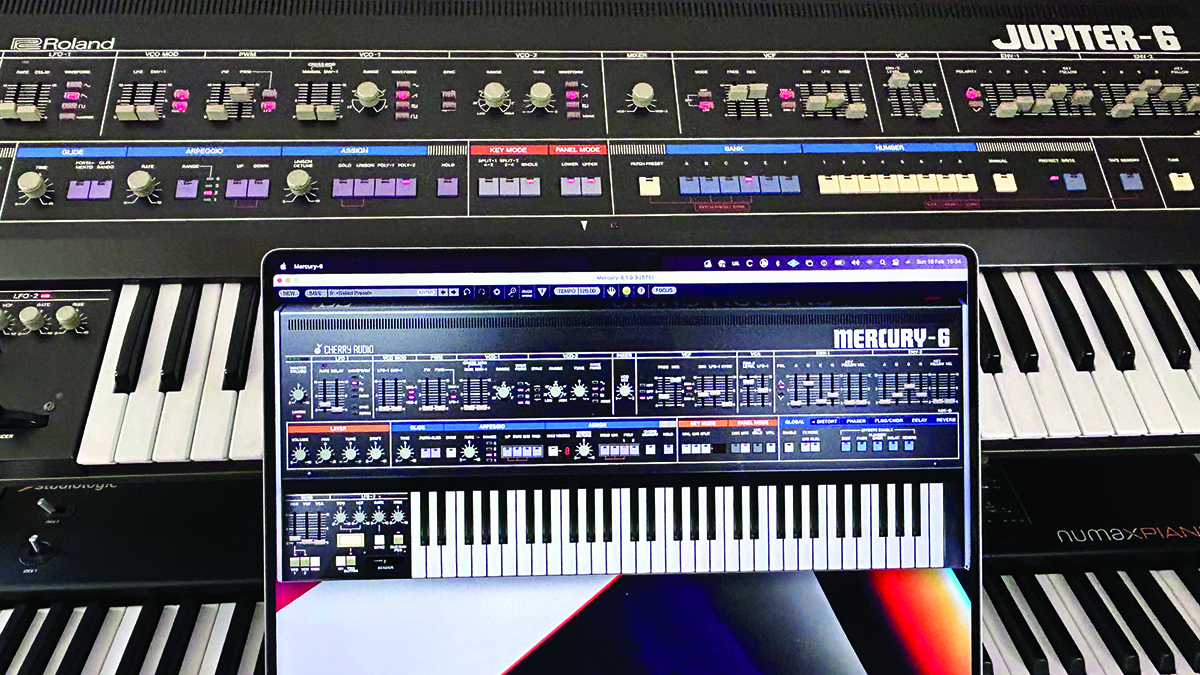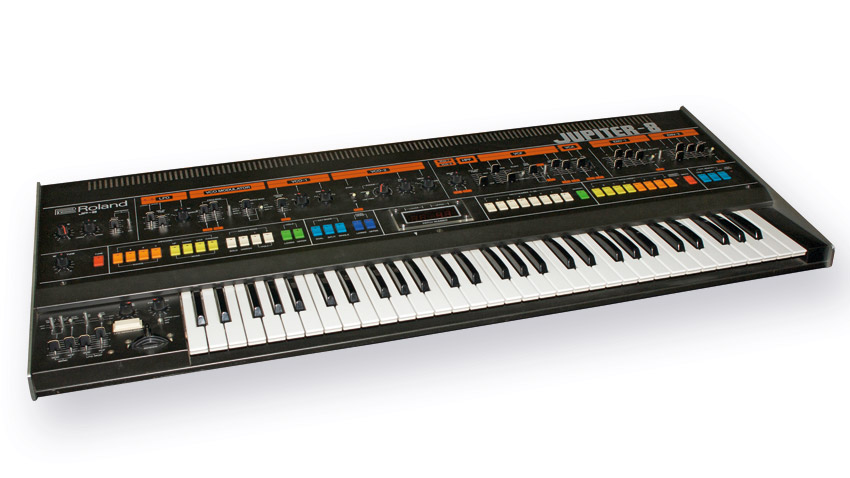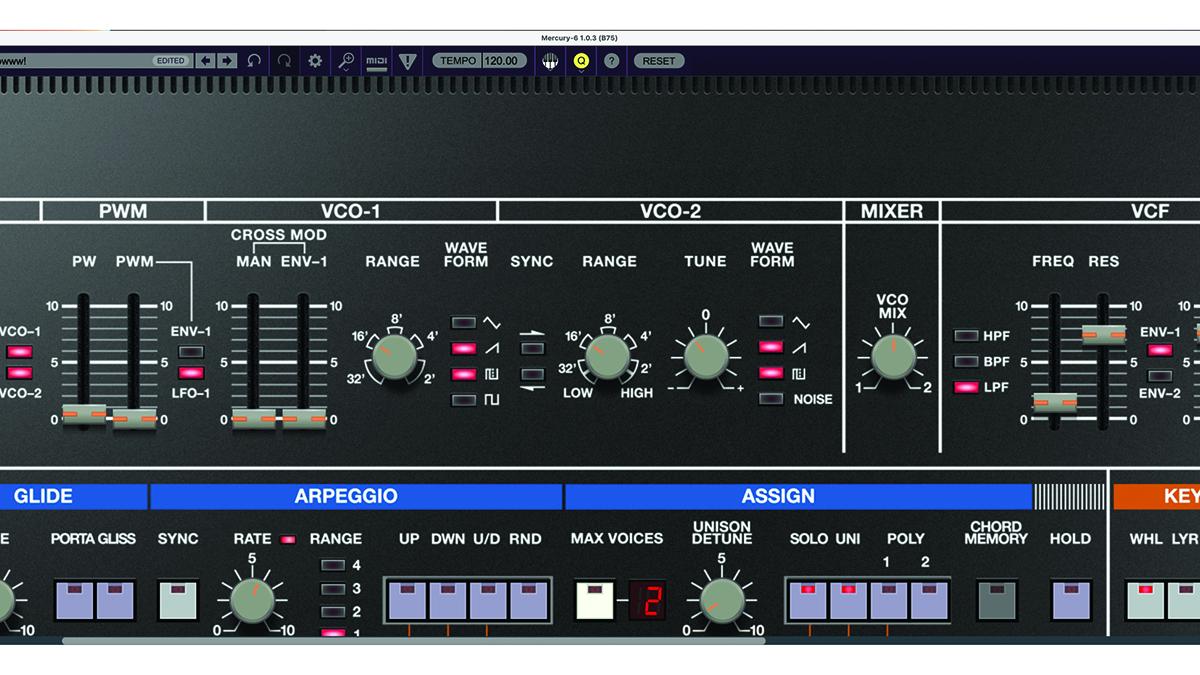MusicRadar Verdict
If you enjoy an uncluttered signal flow with a plugin that exudes nostalgia and contemporary flair, this is a beautiful synth for all seasons.
Pros
- +
The standalone version invites enormous creativity.
- +
Focus mode makes close-inspection editing a breeze.
- +
500 included production-ready presets.
- +
Incredibly attractive price for such a powerful instrument.
Cons
- -
No negatives, just a whole ton of plusses!
MusicRadar's got your back
Cherry Audio Mercury-6: What is it?
Available in AU, VST, VST3, AAX, and standalone formats, and a free 30-day demo is available.
Barely a month passes without the resurrection of another classic synthesizer in plugin form, but as we know very well, some provide more accurate sonic interpretations than others. Although, surprisingly enough, there are still some vintage classics which remain relatively untouched.
The Roland Jupiter-6 is one such synth, reconstructed here in the guise of the Mercury-6. As with all of Cherry Audio’s classic recreations, the attention to detail and styling is exemplary, with an inviting interface which is incredibly exacting, but with a few added extras, bringing the ol’ Jupe into the computer age.
One benefit of modern technology is that this Mercury is capable of 16-note polyphony. You can set your voice count from 2 to 16, with the ability to compile and detune voices in Unison mode, which makes for the most colossal sound, as 32 oscillators pile on top of each other. It’s a far cry from the limited six voices and 12 oscillators of the original.
We wanted to put the Mercury-6 through its paces, so we lined the new pretender up alongside an original Jupiter-6 from the late ’80s, and ran some tests.

Cherry Audio Mercury-6: Performance and verdict
Beginning with the tone of the oscillators, these were absolutely identical across all waves.
The only subtle difference appeared to be a slightly brighter tone in the upper harmonics of each wave, caused by the wide-open low-pass filter. This is pretty de rigueur for digital facsimiles of the old classics, partly due to the modern pitch of software, but could also be down to ageing circuity in an ’80s synth.
Either way, the filter performed admirably too, across 24dB low and hi-pass modes, and the crunchier 12dB band-pass mode. Cutoff fader positioning was not entirely identical, but the actual sound remains mightily impressive, demonstrating an undeniable original spirit.

• Roland Jupiter-8
The Jupiter-6 isn’t currently in Roland’s Cloud-based lineup, but the Jupiter-8 runs a close second.
• UVI JP Legacy
UVI’s expansion and sample-based library provides examples of the Jupiters 4, 6 and 8.
These exacting tendencies even extend to the envelope phases, where the timings of the attack, decay and release phases were beautifully mirrored at around the 18/20 second mark.
Despite these lengthy timings, there’s a feel of the exponential in the software faders, making it easy to dial in the required phase timings, especially when it comes to the snappier end of business.
Cherry Audio always supplies a standalone mode, which means that you can easily get lost in the synth, with no distractions provided by the DAW.
The onboard arpeggiator adds plenty to the charm, with a healthy contingent of back-end effects providing standalone character. You can choose from distortion, phaser, flanger/chorus, delay or reverb, making it ideal for live use, if you like to take your laptop out on manoeuvres.
Talking of laptops, the interface could easily fill your screen, and while parameter access is very easy indeed, Cherry Audio has included the brilliant Focus Mode. This immediately zooms into a specific area of the panel, zooming out again, with a second click. It’s such a simple idea, and we kind of wish that it was standard on all plugin synths.

Quality costs
As a production-ready plugin, Cherry Audio has done a sterling job; the installation download includes 500 desirable presets, which will have you up and running in no time.
However, we really enjoy the speed of initialisation and creation which is available with this plugin, and with an interface that is this inviting, it’s hard to resist.
If you are running a slightly older machine, the oversampling mode can reduce CPU loading. Scaled between 1 and 4, the highest quality is exceptional, with only a subtle loss in fidelity if lowered.
Regardless, this is one of the best vintage reissues we’ve ever seen in software, at a great price to boot.
MusicRadar verdict: If you enjoy an uncluttered signal flow with a plugin that exudes nostalgia and contemporary flare, this is a beautiful synth for all seasons.
Cherry Audio Mercury-6: The web says
"Mercury-6 is an excellent tool for sound design and electronic music and notably for scoring too, capable not just of searing techno sequences, but guttural drones, sinister high-pitched stabs and even electronic percussion."
Techtelegraph
Cherry Audio Mercury-6: Hands-on demos
Cherry Audio
Starsky Carr
Gear4music Synths & Tech
Audio Tech TV
Cherry Audio Mercury-6: Specifications
- macOS 10.13 or above. macOS 13 Ventura supported. 64-bit required. Native Apple M1 processor support, including Apple M1 Ultra. 3.4 GHz Quad-Core or M1 CPU with 8GB of RAM is recommended.
- Windows 7 or above (including Windows 11), 64-bit required. Quad-core computer with 8GB of RAM is recommended.
- Available in AU, VST, VST3, AAX, and standalone formats, and a free 30-day demo is available.
- CONTACT: Cherry Audio
“I used everything I knew about music”: How Green Day exceeded expectations with their most ambitious song
YouTube just added AI tools that makes musicians, library music and video editors redundant
“Every one of them said yes without hesitation": Hank Marvin and Roger Taylor have just remade a '60s classic for charity










